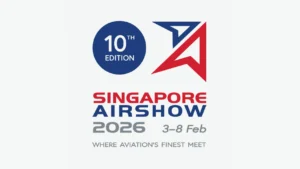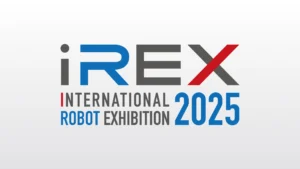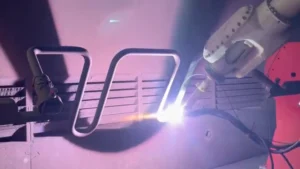table of contents
- Heading 1
- Heading 1
- Heading 1
share this
Introduction
Since the late 1980s, the integration of robotics and automation in thermal spray applications has significantly advanced, particularly in the automotive and aerospace industries. These sectors initially adopted this technology due to the need for high-quality, durable surface coatings that could be applied uniformly and efficiently. The evolution of robotics in thermal spraying has led to more sophisticated applications, featuring enhanced programmability, improved motion control, and integration with monitoring systems. This evolution has established robotic thermal spraying as a standard practice across various industries that require high-quality coatings.
In this case study, we explore how Augmentus utilizes advanced robot vision and automated motion planning to enhance the thermal spraying process for one of their clients.
*Note: Specific company names are redacted for privacy.
Customer Challenges with Conventional Thermal Spraying System
Engine blocks are exposed to extreme conditions such as high temperatures, corrosion, and wear, making improved surface characteristics essential for their durability and efficiency. Conventional thermal spraying system, while effective, presents several challenges:
Complex Application
Uniform coating thickness and quality across complex, curved surfaces of engine blocks are difficult to achieve.
High Skill Requirement
Traditional manual spraying methods require highly skilled operators, leading to variability in coating quality.
Efficiency and Cost
Manual spraying is time-consuming and often more expensive due to labor costs and material wastage.
However, the primary issue for the customer was the inefficiency of manual programming for counterbore spraying motions, which required extensive time and skilled labor, leading to undesirable downtime. This proved to be a major pain point within the industry itself due to the complex programming that is required.

Figure 1: Counter bore holes within the engine block
The Augmentus Solution
The customer first built a digital twin of the working environment using the Augmentus Vision system. Capturing the 3D profile of the work piece with high accuracy aids in defining the work area.
Using our AutoEdge functionality operators select start and end points and edge types, enabling precise detection of the work area. Further customization of process parameters includes:
Point Density:
Adjusting the number of touchpoints for the robot.
Robot’s Angle Offset Rotation:
Aligning the robot’s end effector to ensure it contacts the correct surface.
Robot Speed:
Adjusting the robot’s speed during the operation to maintain consistency.
Semi-Constrained Robot Orientation:
Allowing flexible orientation for the end effector, which avoids robotic singularity during extensive joint rotations and optimizes the path for efficiency.

Figure 2: Augmentus AutoPath Software – Using the AutoEdge module: Selecting the surface/edge to work on

Figure 3: Generation semi-constraint waypoints
Upon completion of the planning phase, the software facilitates the simulation of robot movements, enabling precise cycle time calculations as well as checks for singularity, reachability, and potential collisions.

Figure 4: Simulation of robot movement being done
Once the simulation is successfully verified, users can seamlessly deploy the configuration directly to their robots without the need for any additional coding, ensuring a smooth and efficient transition to production.
Conclusion
By adopting Augmentus’ solutions, manufacturers which provide maintenance, repair, and overhaul (MRO) services across various industries, can significantly reduce programming time from days to minutes. This efficiency not only lowers costs and increases capacity but also positions them to take on more complex projects, thereby driving revenue growth.
Augmentus’ technology enables these companies to address complex challenges and replicate their processes for various parts with similar requirements.




